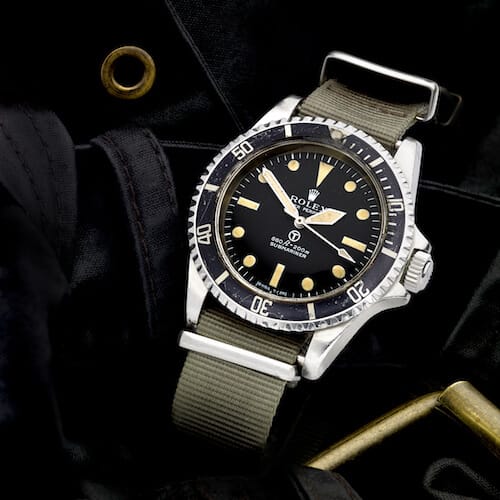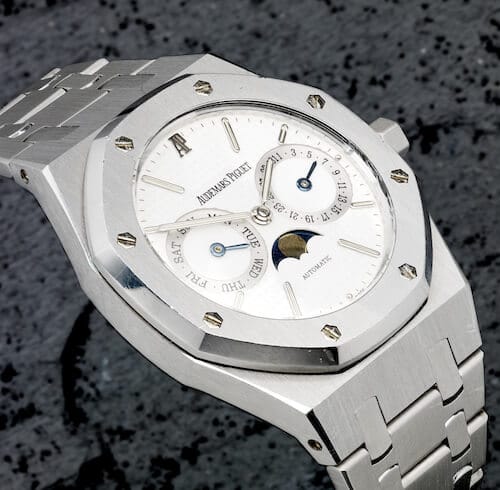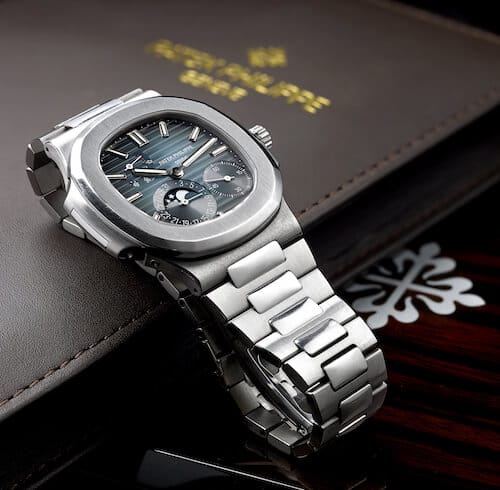Depreciation is a fact of life, as soon as we buy something it starts it starts to lose value – first with the payment of VAT which was added on to the item price anyway, and second due to the fact that the item is now second hand and third, because if we wish to dispose of it we are a seller, not a buyer and so may have to sell at ‘trade’ prices. As time goes by, our item will become worn from use and may be replaced by a newer model. The value continues to fall until some objects become effectively worthless.
This is the norm for most of our consumer goods but there are a few asset classes that do not follow the trend.

"... the best protection against depreciation is to buy the best known luxury watch brand there is: Rolex.... "
Property will appreciate over time – we live on an island with a growing population so the scarcity value is obvious. With regard to personal property, jewellery and watches hold a special place in that they do not depreciate in the same way that a TV or an armchair will, and they depreciate differently within their category. It is strange that the headlines produced when rare watches or jewellery sell for a fortune at auction cause many to believe that their items do not depreciate at all – and retailers are also guilty when the use the word investment is used at the point of purchase suggesting that you will actually make money on your purchase…..
Jewellery will have a commodity value that underpins its market price. This gives a minimum price that the object can fall to, based on the cost of the metal and stones. Fashion will add desirability on top of this – or not dependant on the style, quality and era. Jewellery from the top designer houses will always sell for more than comparable generic examples, but this has to be balanced against the eye-watering fall from the original purchase price.
So if a ring has its gold-weight and diamond to fall back on, what do we make of a steel watch with no metal value that may retail for thousands? Watches are a very complex area with residual values based on brand, material, functions and age.

"... go for steel sports models. Bi-metal and gold will cost you more but will not add significant desirability.... "
All watch brands with a very few exceptions will depreciate immediately after purchase. There are a few such as the grand complication Patek Philippes which are in such short supply and high demand that they can immediately be sold for a profit. The brands themselves frown on this and if you do it, they may not sell you anything in the future. The main question is how far the value falls and whether it will come back up.
The best protection against depreciation is to buy the best known luxury watch brand there is: Rolex. Even within this brand there are good and bad choices – the rule is, buy what is popular, then lots of people will want to buy it off you later. Sadly, herd mentality rules. Avoid Cellinis like the plague and if you can, go for steel sports models. Bi-metal and gold will cost you more but will not add significant desirability in the secondary market.
The same is true of the other titan of the watch auction rooms; Patek Philippe. If you buy steel you get (relative) affordability and so desirability. With Patek, the simple Calatravas are common – so depreciating more than their more complex cousins and if you go for white or rose gold rather than yellow and stay away from unusual shapes you are going the right way to protect your money.

"... the grand complication Patek Philippes are in such short supply and high demand that they can immediately sold for a profit.... "
As the price of new watches across all brands marches upwards relentlessly, it has the effect of dragging the second-hand price up with it. Buy well and you may find that you can wear your watch carefully for a few years and then sell it for what you paid for it – and there are few consumer goods you can say that about.
But what if you are not a fan of either Rolex or Patek Philippe? While you may face a steeper depreciation curve, there still things you can do. Aim for the popular ‘hero’ models of the main commercial brands. Watches that the brand is known for and have a history with will always be in demand. Avoid limited editions of lesser known companies– they only enhance a brand that is already in demand.
So can you make a profit rather than just preventing depreciation? The answer is yes – if you follow the rules about buying what is popular but instead of buying at retail you go for good condition pre-owned with box and papers. This avoids the VAT and initial value drop and so shortens the time before the secondary market inflation lifts you up again.
All that has been said here is for the ruthless economists amongst you. It has nothing to do with enjoying watches. It would be a sad situation if watches were only bought because of what they might be worth in the future, whether we really liked them or not. During my time running a watch boutique on Bond Street I was often asked about the ‘investment’ potential of our pieces. My answer was always the same, ‘your investment is in a quality time piece that will delight you every time you look at it – for many years to come. One that will always be worth servicing or repairing and that you can pass on to your children’, no mention of resale at all.
Buy what you like and follow your heart – who know, it is often the ‘left field’ ‘ugly-duckling’ models that - many years later – turn into the collector’s ‘swans’ worth a small fortune. You never know….

